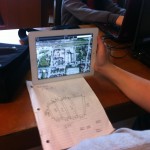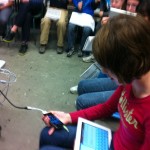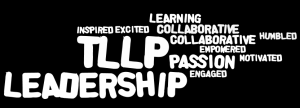Dear Reader,
It was almost three years ago that I shared with you why I stood strong with my Union. “Why I Protest”. Then, for several weeks, I spent my days in solidarity with many teachers across Hamilton Wentworth District School Board, and across Ontario, in Protest against Bill 115, a legislation that would eventually force a contract upon us and force Teachers to return to work without respecting a mutual bargaining agreement – one that would could improve our Standards of Education.
Now, three years later – the Elementary Teachers across Ontario are once again asking the Government, and the public, to support Public Education with the highest possible standard.
In this round of contract negotiations, ultimately, teachers are asking for better working conditions. This means smaller class sizes, more support for special education students and the autonomy to use professional judgment during non-instructional time. This brings me to a story I want to share with you – One that hits all of these issues. I see now how it has helped shaped who I am today and why I stand tall with the Elementary Teachers Federation.
Last week, I was having dinner with my family when a young man approached me. “Mrs Pipe?” He asked. It took me a minute to recognize him, but then the memory of that school year came rushing back.
I’ve never shared this story before, but I want people to understand just how demanding, overwhelming and debilitating our jobs can be without the proper support, choice, and autonomy with how we spend our time.
A few years ago, I was the teacher of a class of 42 Grade Five students. I was super excited to start this new job…at first. It was a brand new school. I was leaving a small community school that I worked at for several years and I was ready for a change. In June, I said goodbye to my class of 20.
The first day of school that year, I had 38 students. Because the classrooms were smaller than what I was used to, I had to get rid of all tables, teacher desk, quiet reading corner, additional book shelves, or any extra furniture in order to make room for 38 desks. It was a challenge. Quite honestly, I wept coming home from school that day. Space is important to me. I wasn’t sure how I could do it.
Then, on day two, I got the news that 2 more students had registered and would be put in my class, bringing my total up to 40. There were no more desks available so two students would share. That week, I began reading through my OSR’s (Ontario Student Records) only to discover that more than 14 of my students were on an IEP for a variety of reasons (Learning Disabled, Gifted, Developmentally Disabled, etc. ). I also had two students that did not speak a word of english. The biggest challenge was the blind student because we had to ensure the room was clear of obstructions. Due to the needs of this blind student, there was an Educational Assistant (EA) in my classroom. Thank Goodness! I had fifteen I.E.P’s to co-write which included meeting with parents and the Learning Resource Teacher.
I soon realized that my running routine (a personal love of mine) was going to abruptly come to a stop. And it did.
On day three, 4 more students registered and were split up between my classroom and the other classroom (who also had 38 students). That would bring me to 42.
I have heard some educationalists argue that class sizes do not matter. Let me tell you just how much they matter. Just do the math. Parent communication became scarce. If you were parents of a student in my class, you could speak to me, say, once every two months. That is IF I found time to contact a parent everyday. Assessments and grading? I had to become really good at oral feedback and ensure that I only spoke to each students for a short period of time each day. I taught Math, Science, Social Studies, Language, Art, and Drama. I became good at both cross-curricular teaching and assessment. That’s a positive.
By week two, I was finding ways to manage my class. I had developed a very strong online network. I felt isolated lonely in the school since so much of my time was dedicated to simply managing the class and the duty schedule. Way back then, my online colleagues (and now my good friends) became my supports – @dougpete @thecleversheep @courosa @crutherford. They kept me grounded.
Unfortunately, the amount of students that I had, did not change the type of support or expectations that I had in other areas of my job at the school level.
By mid-September, I had to start my DRA’s (Diagnostic Reading Assessment). 42 DRA’s. Again, unfortunately, the support staff in the building (Literacy Improvement Teacher, for example), were there to assist teachers with programming needs, not with student assessment, so I was on my own. I would try to do 4 DRA’s per day in order to meet the deadline. This meant photocopying hundreds of booklets and assessment pages for the students to complete. My mom came in and helped me.
I was happy when the weekend came because this gave me a chance to do what I really loved. Plan my program. This was the year that I started classroom blogs and skyping in the classroom. This was an olympic year (Vancouver 2010) which connected so well to our Inquiry Big Idea – How do International Events strengthen Canada’s connections with other countries?
At school, the September/October deadlines and meetings continued. We have annual learning plan (ALP) goals (a several page document) to complete and hand-in. This was late. It is hard to explain the frustration and embarrassment I felt when my VP sent an email to me (and some others) reminding me this was due. Then there was the TLCP framework template. Also due and also late.
By week three, I was told that there would be some reorganization of classes and my class numbers would be reduced. But this would need wait another couple of weeks. This reorganization was a district initiative, not a Provincial mandate.
In the meantime, I became quite unaware of most things around me. My friends, my family and my colleagues. The honeymoon phase for many of my students was over and their needs became more and more prevalent. One student, a ward of the CAS cried most days. Another, slept on his desk because he rarely slept at night. Another, would often leave class and not come back for a long time. The students’ parents wanted interviews (all 40 of them), the ELL teacher needed my time, the LRT needed my time, the EA needed my time and then there was the new protocol to have “divisional meetings” during our nutritional breaks.
At home, I was barely present. I regret that now.
I remember this one meeting (during a nutrition break) as if I was watching myself, rather than actually being in the meeting. I sat down in the library with 5 other teachers and the Vice-Principal (VP) of the school. I had a stack of books, papers, and files in one hand and some food in another. As the VP began the meeting, without thinking, I abruptly interrupted her and asked if I could share how I was feeling – perhaps seek help/support from my co-workers. I’m not sure if I’ve ever asked for help like that before. But, her response wasn’t what I expected. She hushed me and explained this wasn’t the time. I’m not sure what I felt, but I couldn’t let it go. Again, I explained I needed help, and again she said that the divisional meeting was prescribed and that I needed to focus on the task at hand. But I couldn’t and I left the meeting in tears. And I had to teach Math in 10 minutes.
I don’t regret that year because I eventually connected with some of the most incredible students and teachers. I was working in one of the first tech oriented schools and learned and unlearned so many strategies that are only now being seen as mainstream and innovative. I found ways to make it work. I began presenting at conferences and unofficially became a GAFE (Google) teacher.
But I also lost a lot too, and so did my students.
Clarity…
Not too long after that meeting, I had a moment of clarity on what can be lost when we forget about the human aspect of our jobs as educators. I lost and found myself sometime during this school year. Clarity came as I sat on that bench at the side of the road, watching as my brand new Subaru was towed away. I don’t quite remember the drive or how it happened. On my break that day, as I drove to Tim Hortons for a coffee, I simply went into a daze and hit the bus in front of me like a brick wall, totalling my car. I wasn’t hurt seriously. In fact, I was given a chance to really reflect on the demands on our job and how we need to stand up for our work conditions and our needs as teachers – because ultimately, this impacts our students. It has to.
The student that approached me during that night out with my family, surprised me with a hug. He towered over me. He looked at me and smiled, “You were my favourite teacher.” He said. I teared up. He has no idea!!






